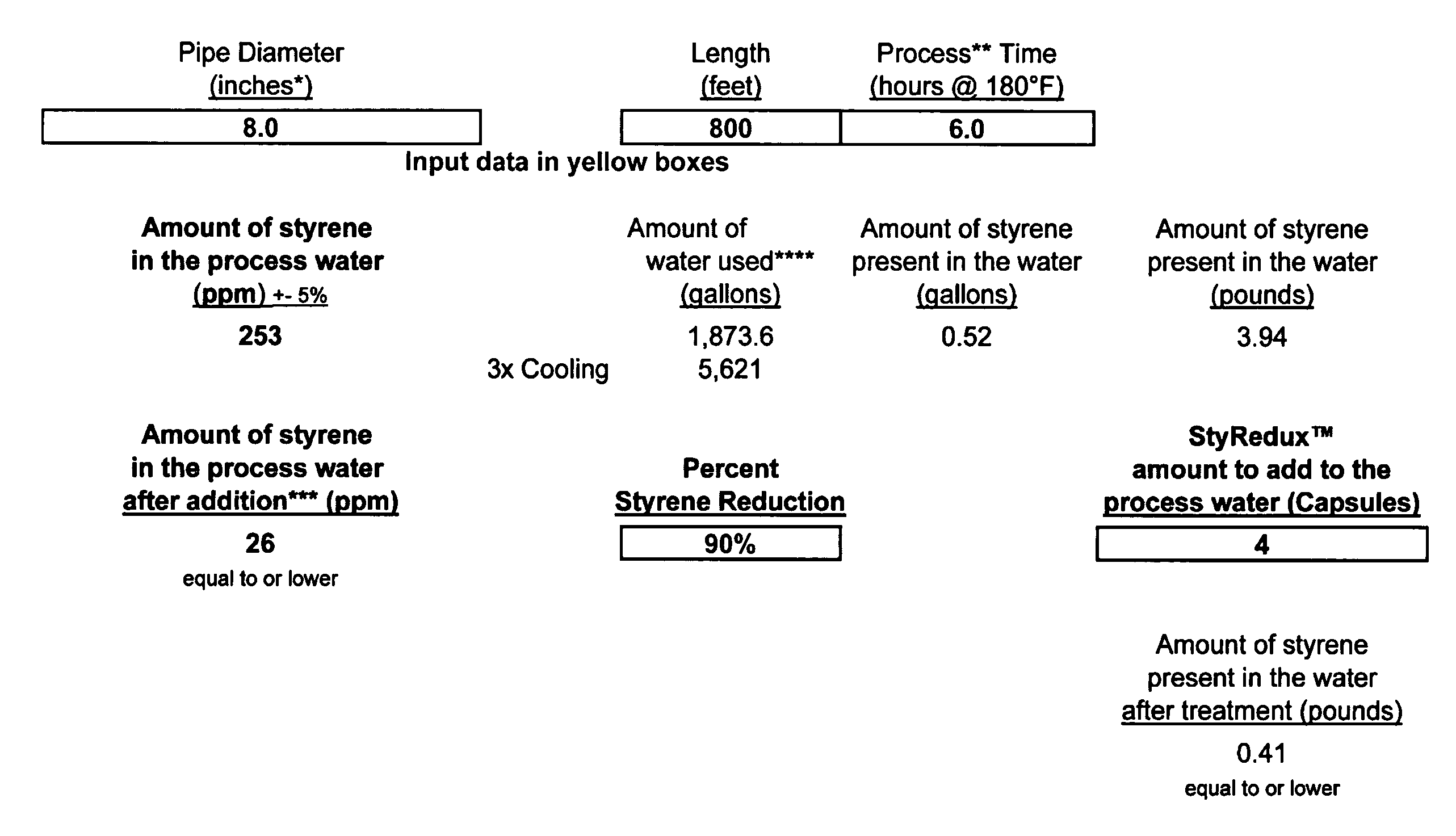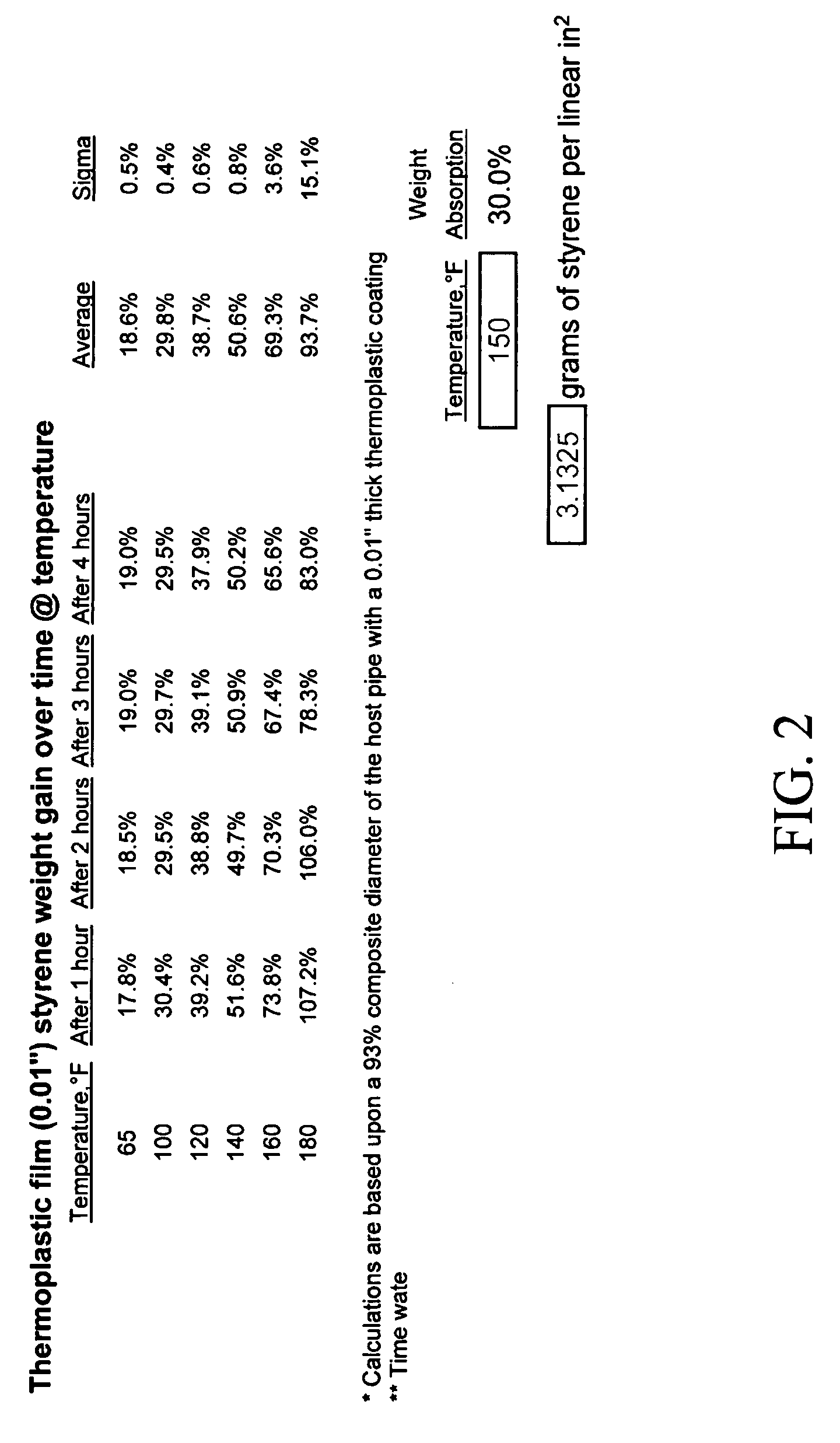Styrene reduction agent
a technology of styrene and reduction agent, which is applied in the direction of detergent compounding agent, halogen oxide/oxyacid, other chemical processes, etc., can solve the problems of contaminated curing water/condensate, styrene contamination, and pipe cracking and damage, so as to facilitate quick and ready deployment of the mixture and reduce the residual monomer
- Summary
- Abstract
- Description
- Claims
- Application Information
AI Technical Summary
Benefits of technology
Problems solved by technology
Method used
Image
Examples
example 1
[0070]Tables 1-2 show an estimation of the calibrated amount of persulfate salt mixture capsules for addition to the cure water for the Cured-In-Place Pipe process product estimation of a 42″×625′ pipe. Estimates are based on 15″×220′ and 42″×350′ historical data. Water usage is twice that of inversion water. Water usage due to: cooling, infiltration, addition to maintain head.
Notes: Theoretical Invertion only: 350′=22,215 gallons, 13 capsules
[0071]Actual: Invert+cooling+inflow=44,100 gallons, 25 capsules
[0072]
TABLE 11. Estimate water for inversion: 39,386 gallons2. Estimate Styrene prior to treatment: (55 ppm), 9** hoursEstimate styrene afterHours at 180 Ftreatment (ppm)Amount of capsules 9**4201132113222152221812319-20024
[0073]
TABLE 2Estimate water for Maintaining Head / cooling: 81,531 gallons, 9 hours***Estimate styrene afterHours at 180 F.treatment (ppm)Amount of capsules 9**4381134013242152431814519-20046Theoretical calculation for holding tanks when treatment isstopped at 9 h...
PUM
| Property | Measurement | Unit |
|---|---|---|
| temperatures | aaaaa | aaaaa |
| diameter | aaaaa | aaaaa |
| relative concentrations | aaaaa | aaaaa |
Abstract
Description
Claims
Application Information
 Login to View More
Login to View More - R&D
- Intellectual Property
- Life Sciences
- Materials
- Tech Scout
- Unparalleled Data Quality
- Higher Quality Content
- 60% Fewer Hallucinations
Browse by: Latest US Patents, China's latest patents, Technical Efficacy Thesaurus, Application Domain, Technology Topic, Popular Technical Reports.
© 2025 PatSnap. All rights reserved.Legal|Privacy policy|Modern Slavery Act Transparency Statement|Sitemap|About US| Contact US: help@patsnap.com



